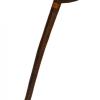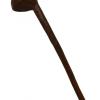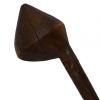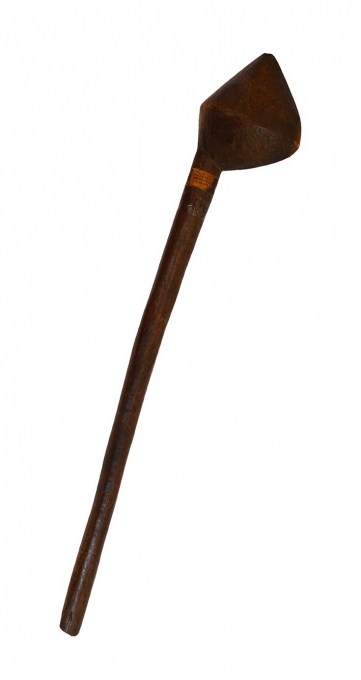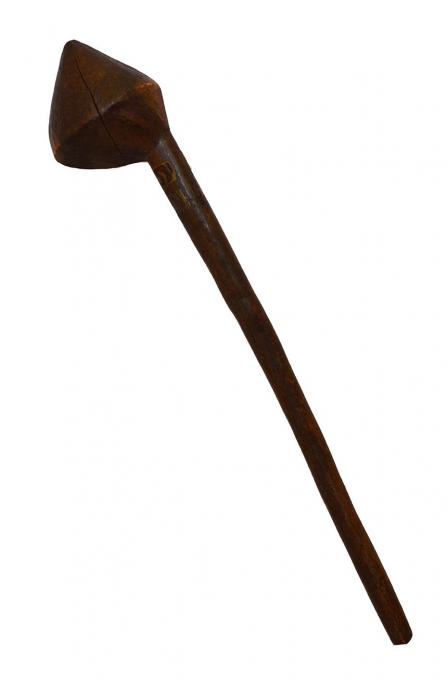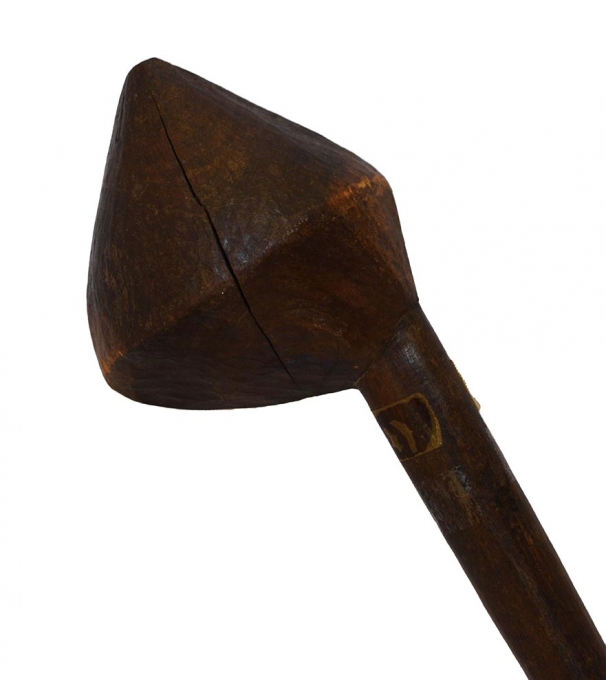Everyday Aboriginal life provides the opportunity for numerous objects (baskets and trays, weapons, musical instruments) to combine cultural and aesthetic dimensions. This encounter is essentially due to the fact that many everyday objects also play a role in ceremonies in honour of the Dreamtime, and that this religious function implies a significant artistic re-elaboration: paintings, engravings and sculptures adorn and sacralise them. What is obvious in the case of the tiwi funerary poles or the totem poles of Arnhem Land, which are used for religious purposes from the outset, takes on greater significance in the case of artefacts that are primarily utilitarian. This is particularly true of weapons (maces, boomerangs, spears, spear-throwers), whose function as fishing, hunting and/or warrior instruments is recuperated in a religious context, where mythical battles are (re)enacted, magical anticipation of the favourable outcome of a clan battle or game hunt is used to make the object a "totemic" object of veneration. The Aborigines, who had no knowledge of metal before the arrival of the English in their territory, produced weapons made entirely of wood, which they decorated or not. Traditional hunting weapons became increasingly rare in favour of bows and arrows, as well as knives and other weapons brought by the settlers. This puzzle has a round end and is simply painted. There is no motif, no painting, no engraving in the wood to link it to a clan. It is therefore unlikely that this puzzle was used in tribal battles. Its simple appearance suggests that this object was used daily by the Aborigines as part of their hunting activities. The round, very heavy end may indicate that it was used for fishing. Its heavy weight allows it to penetrate the water and stun fish swimming at shallow depths.
ANONYME
Killing Stick , c.1950
Art : Aboriginal
Origine : Autres / Others
Dimensions : 2,8 x 60 x 3 cm
Medium : Wood
Price : Nous contacter / contact us
N° : 4331
